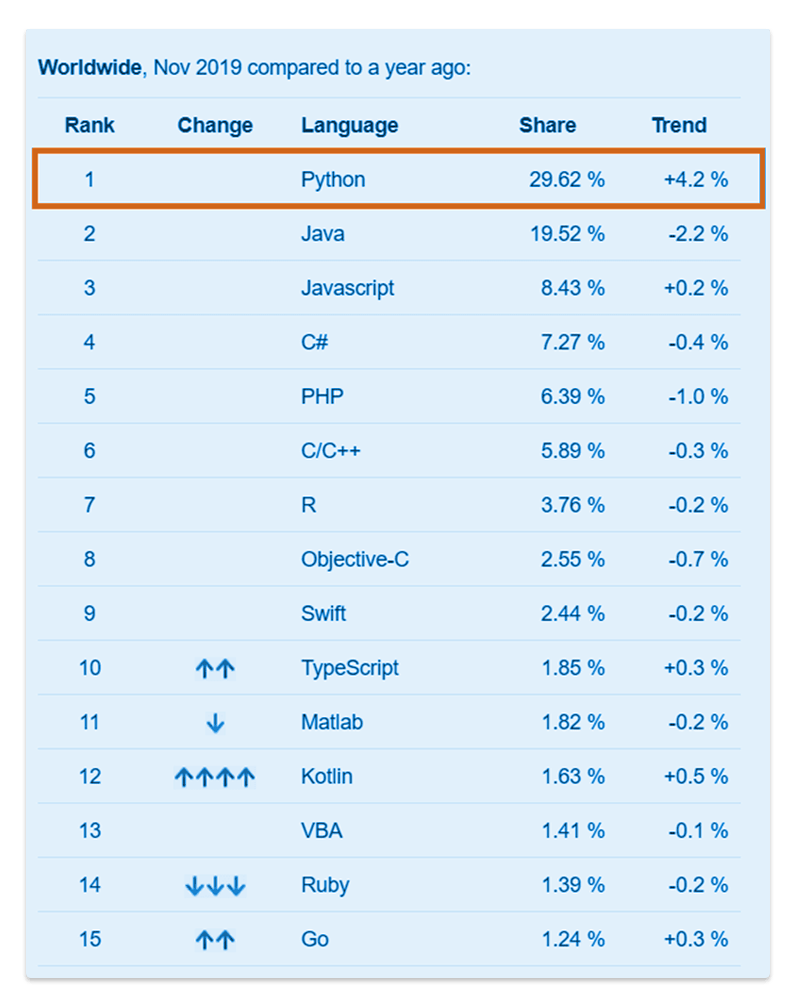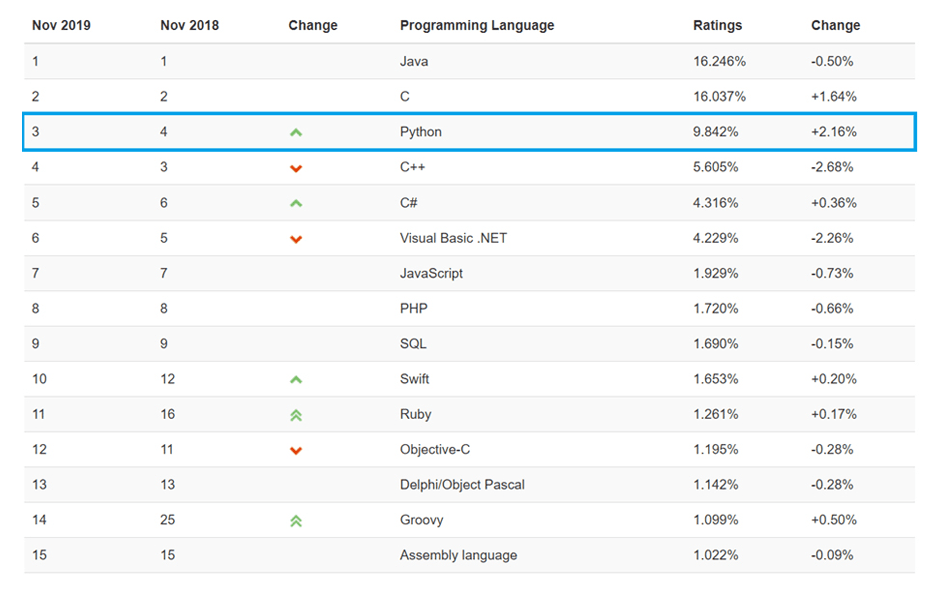
Python is a popular programming language. It was created by Guido van Rossum and released in 1991. Python is an interpreted, object-oriented, high-level programming language with dynamic semantics. Its high-level built in data structures, combined with dynamic typing and dynamic binding, make it very attractive for Rapid Application Development, as well as for use as a scripting or glue language to connect existing components together.
Python is a high-level, general-purpose and a very popular programming language. Python programming language (latest Python 3) is being used in web development, Machine Learning applications, along with all cutting-edge technology in Software Industry. Python Programming Language is very well suited for Beginners, also for experienced programmers with other programming languages like C++ and Java.
It is used for
- web development (server-side)
- software development
- mathematics
- system scripting
What can Python do?
- Python can be used on a server to create web applications
- Python can be used alongside software to create workflows
- Python can connect to database systems. It can also read and modify files
- Python can be used to handle big data and perform complex mathematics
- Python can be used for rapid prototyping, or for production-ready software development
Why Python?
- Free and open-source - You can freely use and distribute Python, even for commercial use (Windows, Mac, Linux, Raspberry Pi, etc).
- Easy to learn - Python has a very simple and elegant syntax just like English. It's much easier to read and write Python programs compared to other languages like C++, Java, C#.
- Portable - You can move Python programs from one platform to another and run it without any changes.
- Python has syntax that allows developers to write programs with fewer lines than some other programming languages.
- Python runs on an interpreter system, meaning that code can be executed as soon as it is written. This means that prototyping can be very quick.
- Python can be treated in a procedural way, an object-oriented way, or a functional way.
- Python programs generally are smaller than other programming languages like Java. Programmers have to type relatively less and indentation requirement of the language, makes them readable all the time.
-
The biggest strength of Python is huge collection of standard libraries which can be used for the following :
- GUI Applications (like Kivy, Tkinter, PyQt etc. )
- Web frameworks like Django (used by YouTube, Instagram, Dropbox)
- Image processing (like OpenCV, Pillow)
- Web scraping (like Scrapy, Beautiful Soup, Selenium)
- Test frameworks
- Multimedia
- Automation
- Data science and machine learning with SciPy, Pandas, IPython, NumPy, and more
- Databases
- Documentation
- Graphical user interfaces
- Image processing
- Machine learning
- Mobile apps
- Multimedia
- Computer networking
- Scientific computing
- System administration
- Text processing
- Web frameworks such as Django, Pyramid, Flask, and Bottle
- Internet protocol support in the standard library for JSON, HTML, XML, FTP, IMAP, and sockets
Who uses Python?
- Mozilla, best known for Firefox, says it has over "230k lines of code" written in Python
- Microsoft promotes Python development with its IDE, Visual Studio Code
- Netflix shares its extensive use of Python for everything from regional failover monitoring software to data science
- Uber says it uses Jupyter Notebook and IPython to share data
- Reddit is largely written in Python and shares the source code on GitHub
- Dropbox has been a public advocate for Python 3 in its infrastructure
- Slack, Digital Ocean, Lyft, Sauce Labs, and Fastly all mention using Python in an Increment article
- Many financial firms, such as CapitalOne, Bloomberg, and JPMorgan, recruit Python developers
- Google (Components of Google spider and Search Engine)
- Yahoo (Maps)
- YouTube
- Mozilla
- Dropbox
- Cisco
- Spotify
- Quora
Disadvantages of Python
-
Speed Limitations :We have seen that Python code is executed line by line. But since Python is interpreted, it often results in slow execution. This, however, isn’t a problem unless speed is a focal point for the project.
-
Weak in Mobile Computing and Browsers :While it serves as an excellent server-side language, Python is much rarely seen on the client-side. Besides that, it is rarely ever used to implement smartphone-based applications. The reason it is not so famous despite the existence of Brython is that it isn’t that secure.
-
Design Restrictions :As you know, Python is dynamically typed. This means that you don’t need to declare the type of variable while writing the code. While this is easy on the programmers during coding, it can raise run-time errors.
-
Underdeveloped Database Access Layers :Compared to more widely used technologies like JDBC (Java Database Connectivity) and ODBC (Open Database Connectivity), Python’s database access layers are a bit underdeveloped. Consequently, it is less often applied in huge enterprises.
-
Not Memory Efficient :To provide simplicity to the developer, Python has to do a little tradeoff. The Python programming language uses a large amount of memory. This can be a disadvantage while building applications when we prefer memory optimization.
-
Runtime Errors :As we know Python is a dynamically typed language so the data type of a variable can change anytime. A variable containing integer number may hold a string in the future, which can lead to Runtime Errors. Therefore, Python programmers need to perform thorough testing of the applications.
-
Difficulty in Using Other Languages :The Python lovers become so accustomed to its features and its extensive libraries that they face problem in learning or working on other programming languages.
Python Ranking














